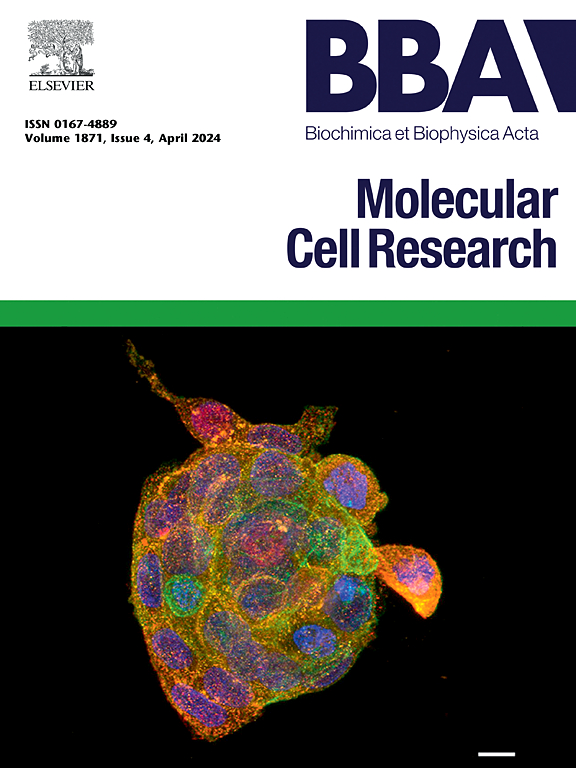Silencing of fibronectin type III domain-containing protein 3A (FNDC3A) attenuates epithelial-to-mesenchymal transition (EMT), cancer invasion, and stemness in triple-negative breast cancer (TNBC)
IF 4.6
2区 生物学
Q1 BIOCHEMISTRY & MOLECULAR BIOLOGY
Biochimica et biophysica acta. Molecular cell research
Pub Date : 2025-03-20
DOI:10.1016/j.bbamcr.2025.119935
引用次数: 0
Abstract
Currently, there are no effective therapeutic targets for triple-negative breast cancer (TNBC), including hormonal therapy, and it has a poor prognosis because of its rapid proliferation, high invasiveness, and metastatic potential. Therefore, it is expected that the elucidation of the characteristics of TNBC at the molecular level may lead to the development of new therapeutic drugs. In this study, Kaplan-Meier curve analysis showed that high expression levels of fibronectin type III domain-containing protein 3A (FNDC3A) were associated with poor overall survival in patients with TNBC. Furthermore, FNDC3A knockdown was found to suppress the epithelial-to-mesenchymal transition (EMT) and invasion potential as well as the stemness in several TNBC cell lines. In addition, RNA-seq analysis revealed that FNDC3A suppression inhibited the expression of Yes-associated protein 1 (YAP1) and its target genes, which have been reported to regulate cancer cell invasion and stemness. These results suggest that FNDC3A is a novel factor that plays an important role in the malignant progression of TNBC by maintaining cancer stemness and promoting cell invasion and that its function may involve the YAP1 pathway regulation. Therefore, FNDC3A is expected to become a potential therapeutic target for patients with TNBC.
求助全文
约1分钟内获得全文
求助全文
来源期刊
CiteScore
10.00
自引率
2.00%
发文量
151
审稿时长
44 days
期刊介绍:
BBA Molecular Cell Research focuses on understanding the mechanisms of cellular processes at the molecular level. These include aspects of cellular signaling, signal transduction, cell cycle, apoptosis, intracellular trafficking, secretory and endocytic pathways, biogenesis of cell organelles, cytoskeletal structures, cellular interactions, cell/tissue differentiation and cellular enzymology. Also included are studies at the interface between Cell Biology and Biophysics which apply for example novel imaging methods for characterizing cellular processes.

 求助内容:
求助内容: 应助结果提醒方式:
应助结果提醒方式:


